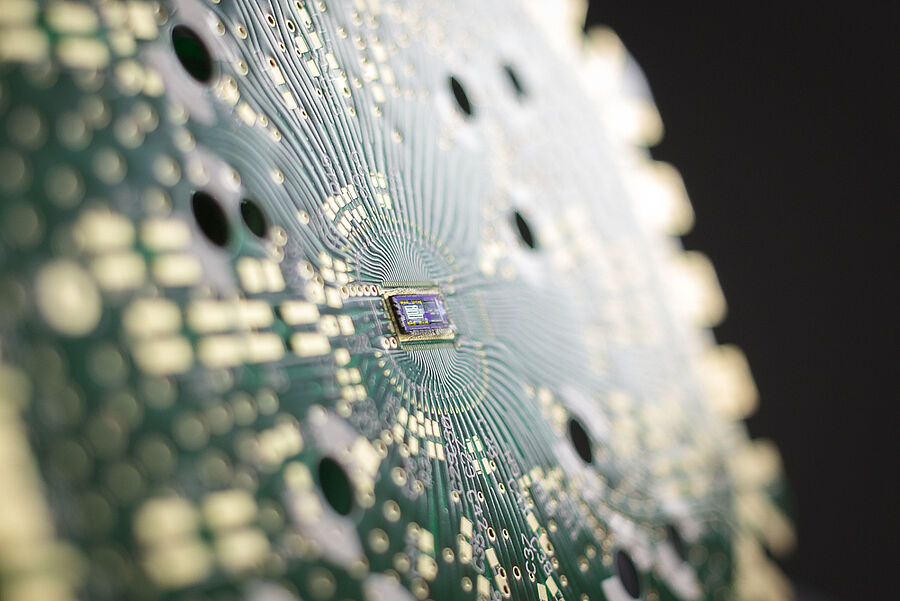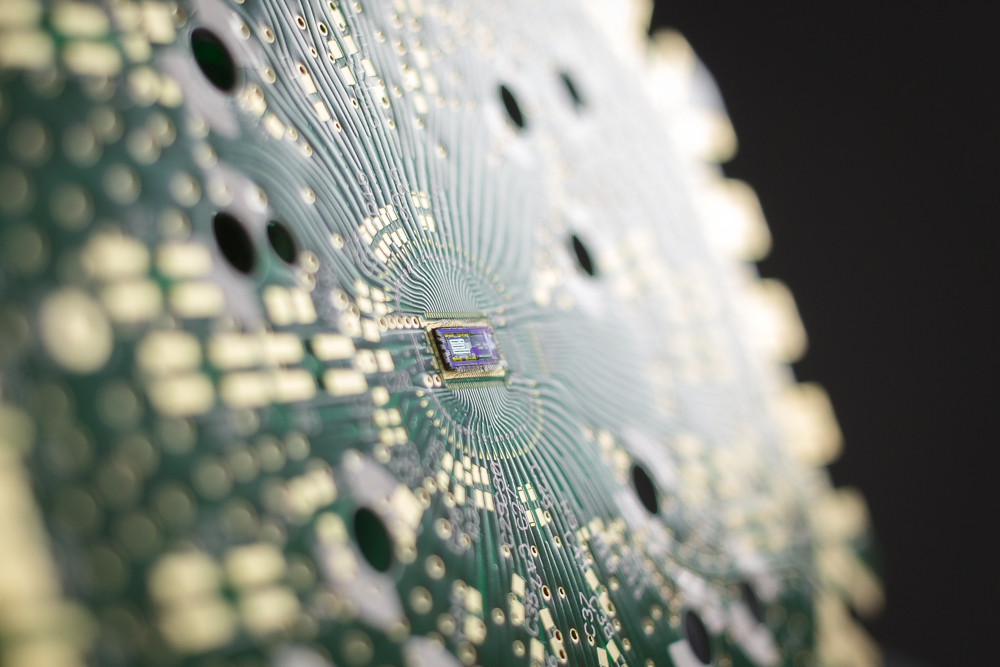PHIDELITI aims to eliminate power-hungry copper in very-short reach communications. As a multi-disciplinary project that spans over the key enablers photonics and microelectronics, it proposes to tackle this challenge through blending opto-electronics and sub-millimeter wave communications. By doing so, it will reap the best performance of both worlds: high energy efficiency over longer reach, and low cost over very short reach, while addressing its mission to place the high-speed data interface closer to the processor – without facing an energy and performance brick wall as it applies to copper.
Driven by and capitalizing on its innovative SiGe integrated circuit technology, PHIDELITI will develop hybrid coherent optical/sub-millimeter circuits with high functional density, including high-bandwidth transimpedance amplifiers and modulator drivers for 25 GHz per-lane rates, sub-millimeter wave modems and power / low-noise amplifiers operating at 145 GHz, which are paired with an analogue coherent homodyne transceiver engine realized in heterogeneous SiGe-BiCMOS/InP technology.
System-wise, the low-complexity coherent optical feed, together with high-speed sub-millimeter wave data delivery over polymer rather than copper waveguides, using carrier frequencies beyond 100 GHz and broadband modulation without the need for equalization or digital signal processing, will not only reduce the costly chip real-estate required to realize all functions, but will also lead to an energy efficiency that outpaces that of copper-based solutions by a factor of 12. At the same time, the use of SiGe technology, which is considered a sweet spot for high speed applications combining radio frequency performance with low cost, will ensure that the required cost credentials are met to ultimately eliminate copper-based wired communications in very-short reach links.
Given the imperative for speed, PHIDELITI will evaluate its technology under the challenging datacom scenario with up to 100 Gb/s per-lane data rates on printed circuit boards for server backplanes, but will also investigate the power of its technology in consumer-oriented setting such as in-vehicle networks.
Start: 01.04.2021
End: 31.03.2024
Goals:
- Analogue coherent homodyne signal detection and bidirectional 50/50 Gb/s/λ communications with simplified opto-electronics
- Advancement and adoption of an efficient SiGe integrated circuit technology that reaches up to the sub-millimeter regime
- Hybrid photonic / sub-millimeter wave integration
- Fabrication of fully functional test-chips/-modules to characterize the performance in stand-alone and end-to-end scenarios
Funding: FFG Production of the Future
Links: www.phideliti.at
Partners: AIT Austrian Institute of Technology GmbH, Infineon Technologies Austria AG, Technical University of Graz, Vienna University of Technology




